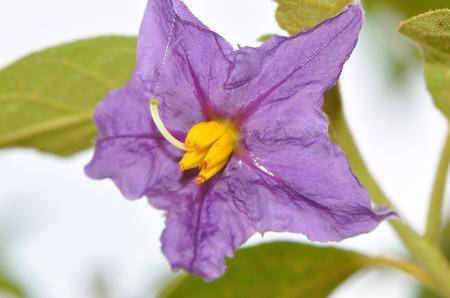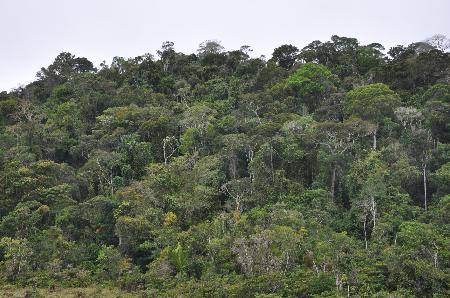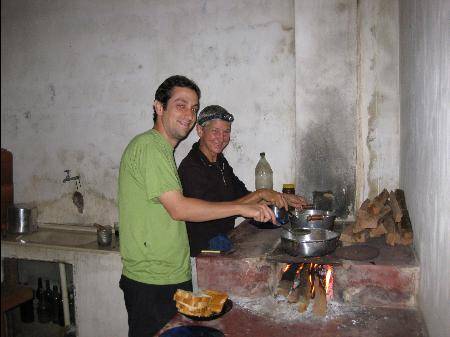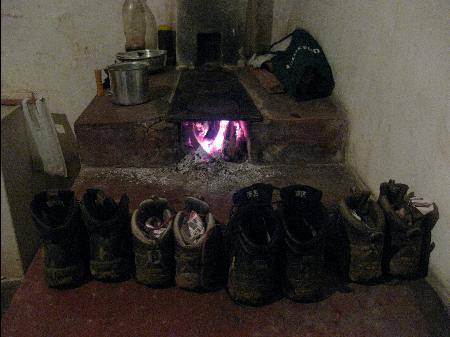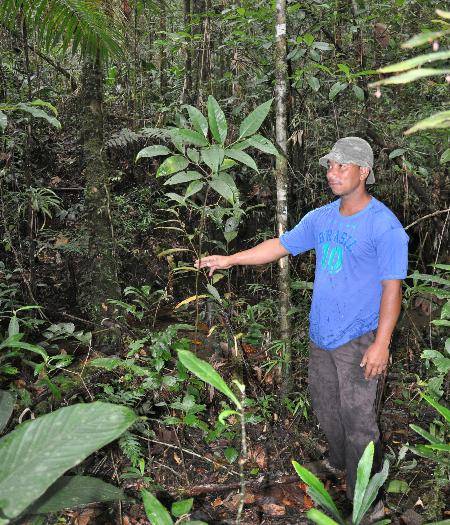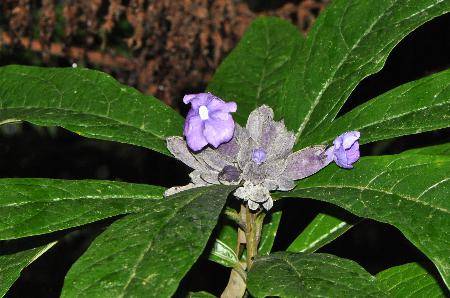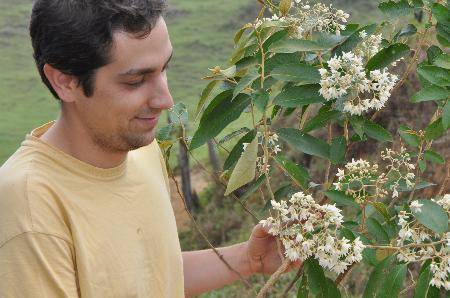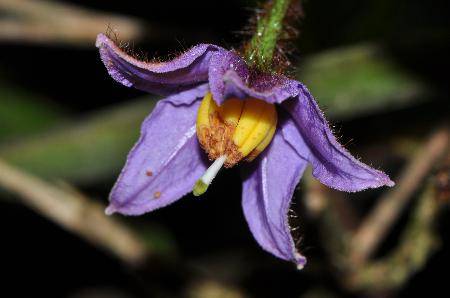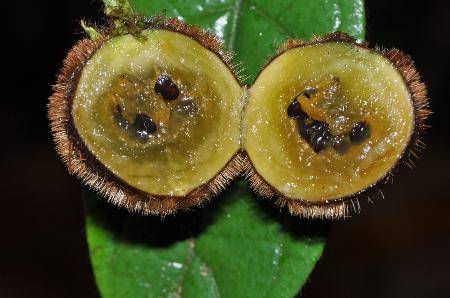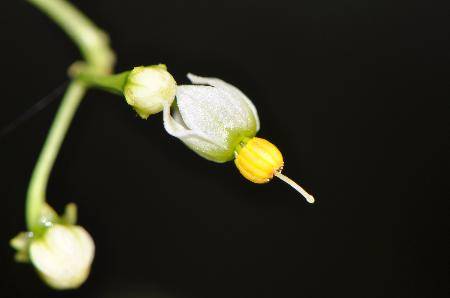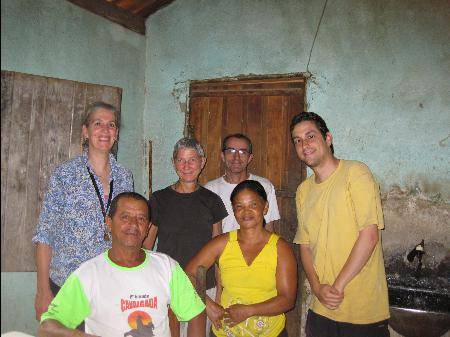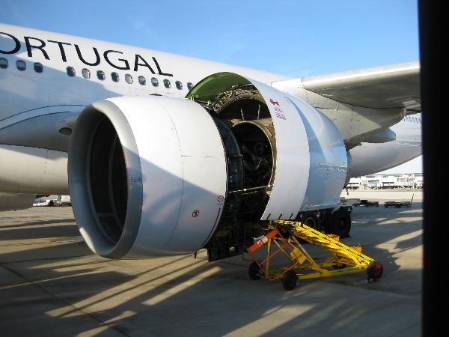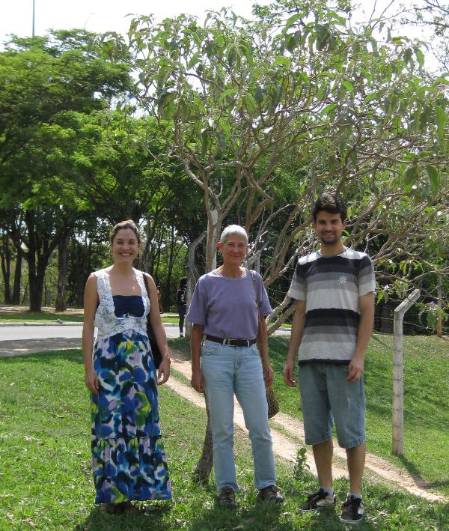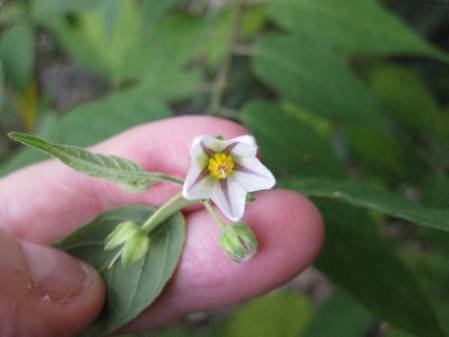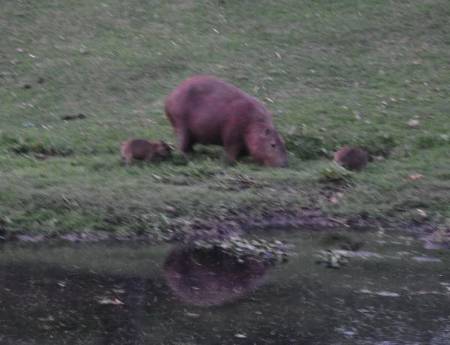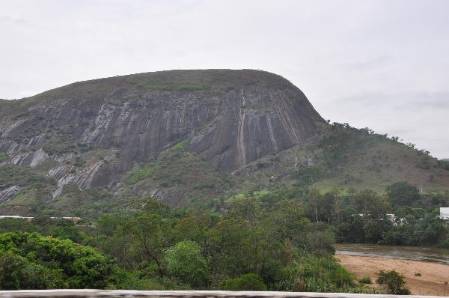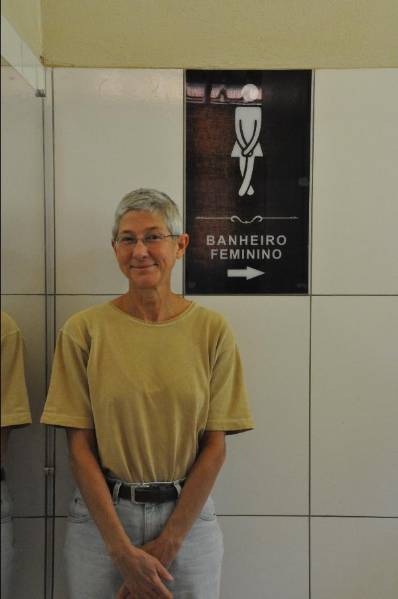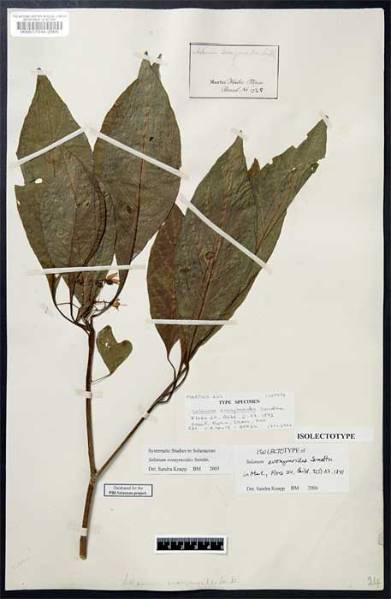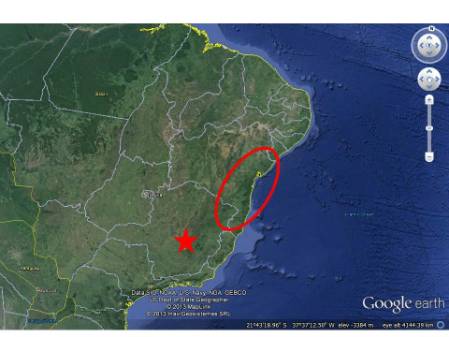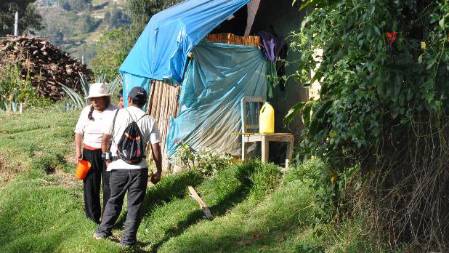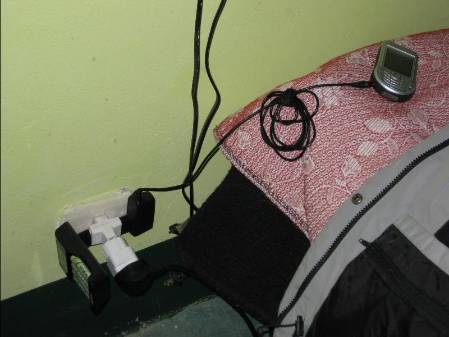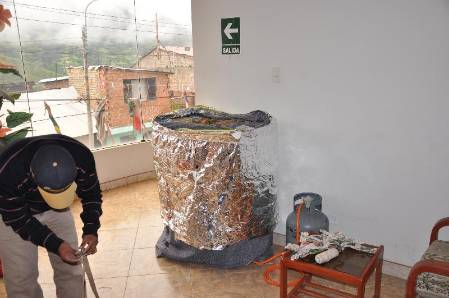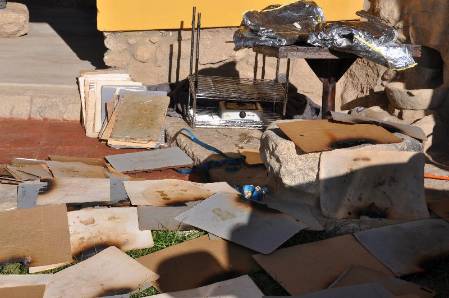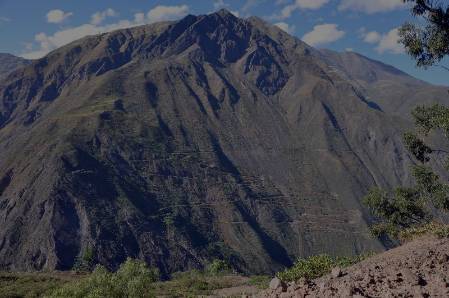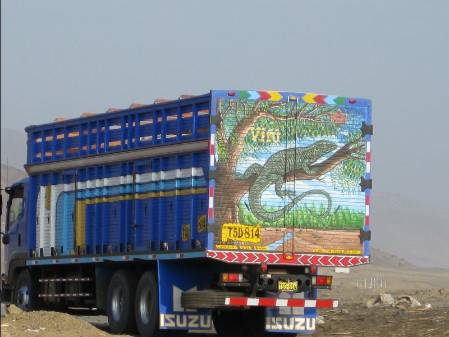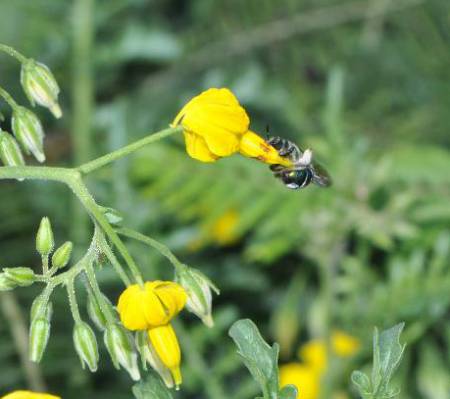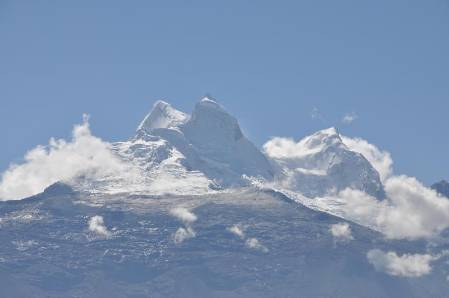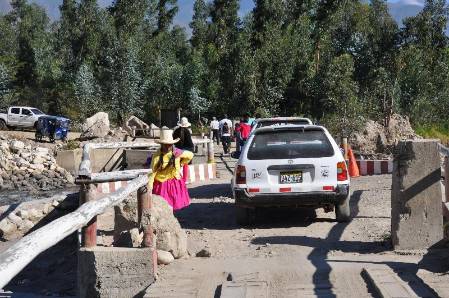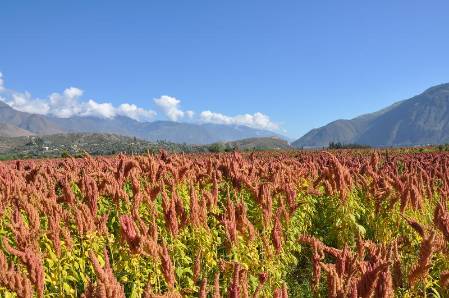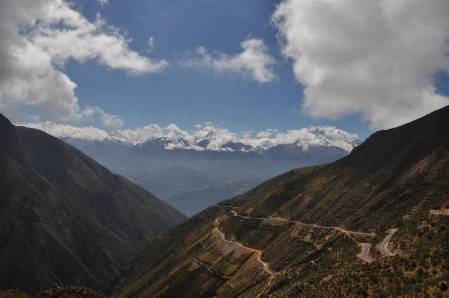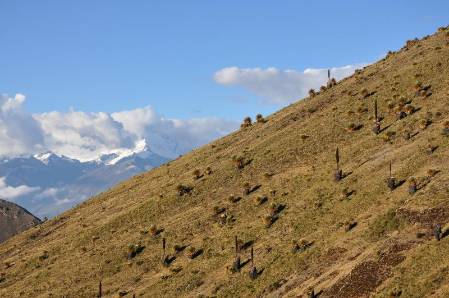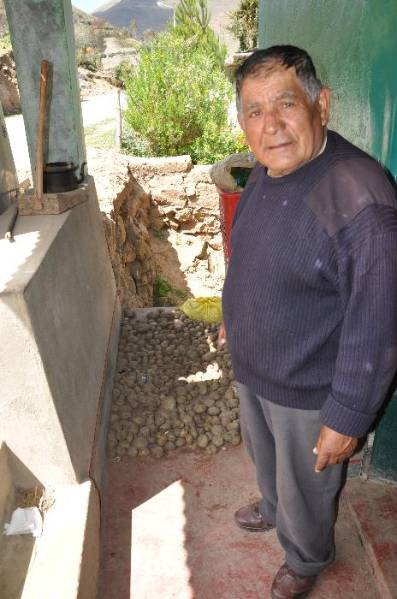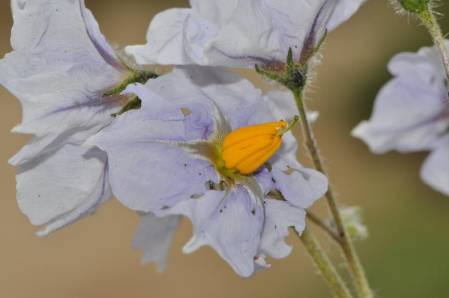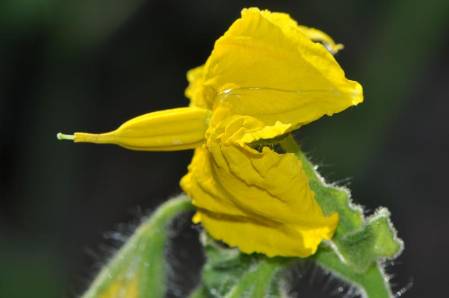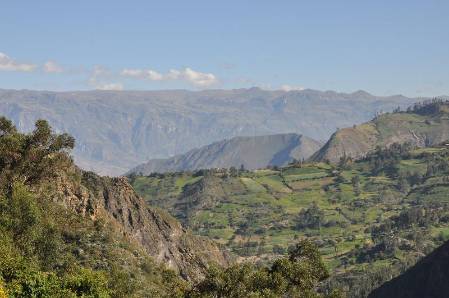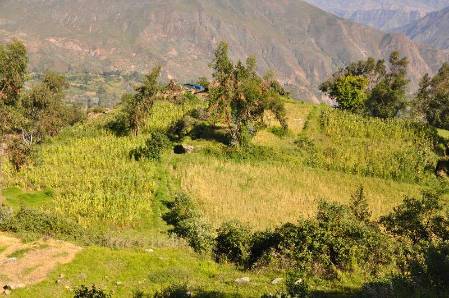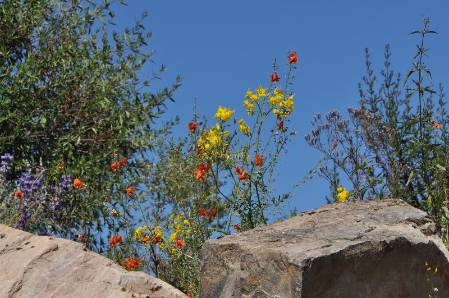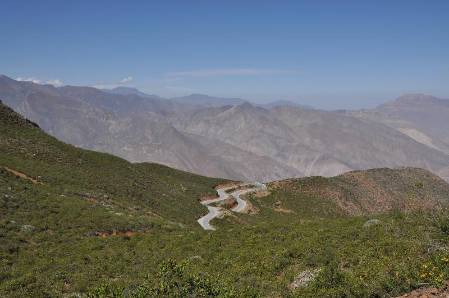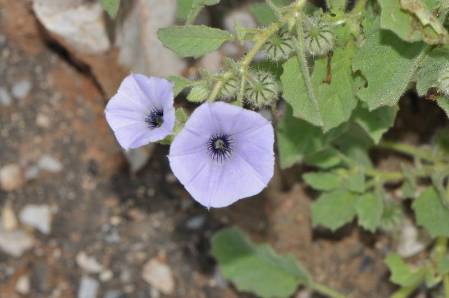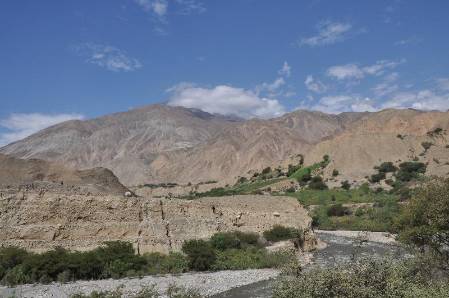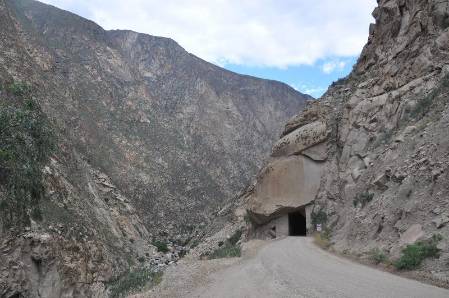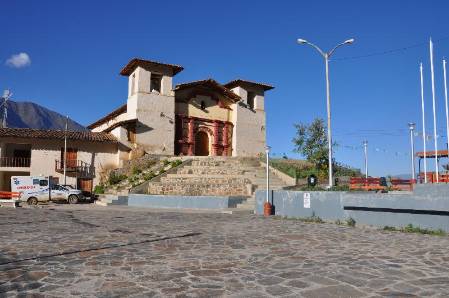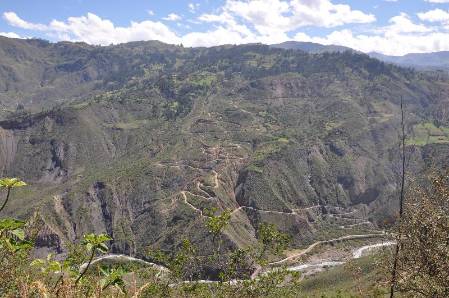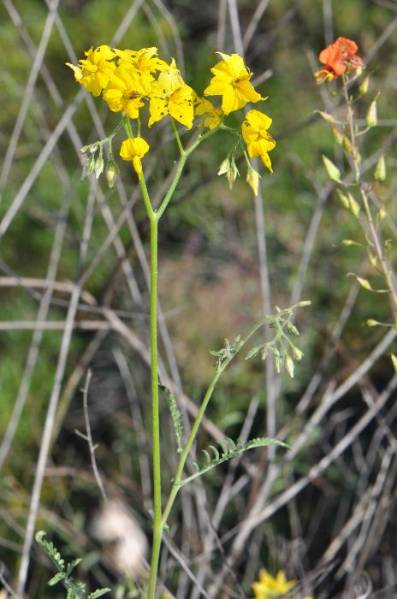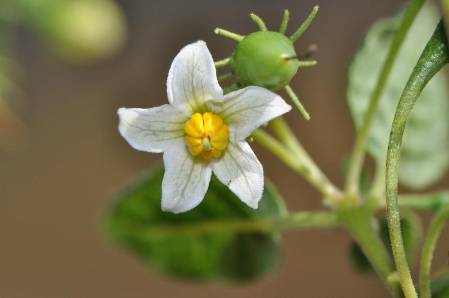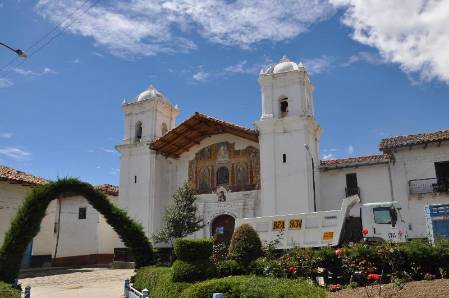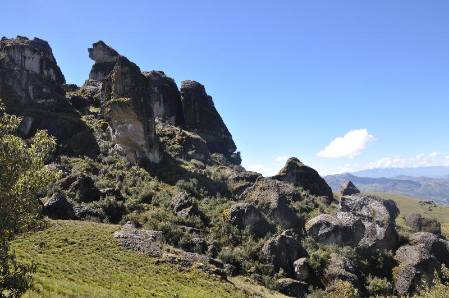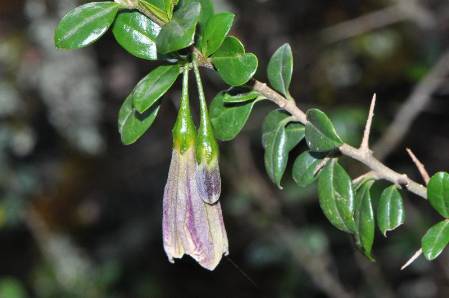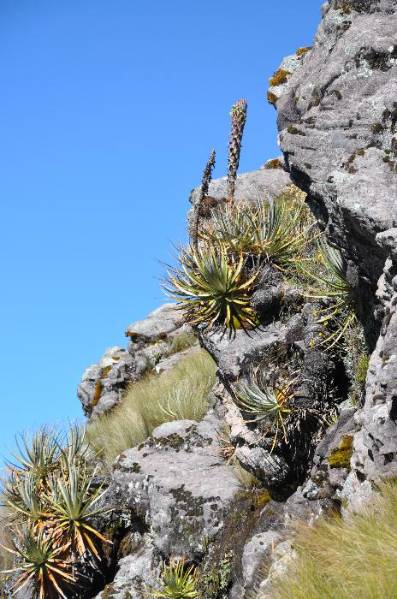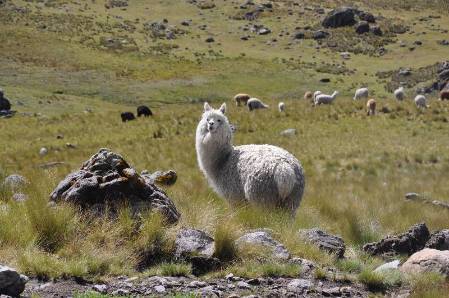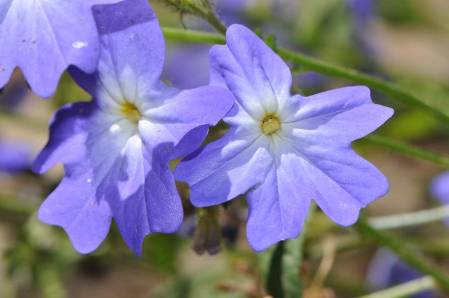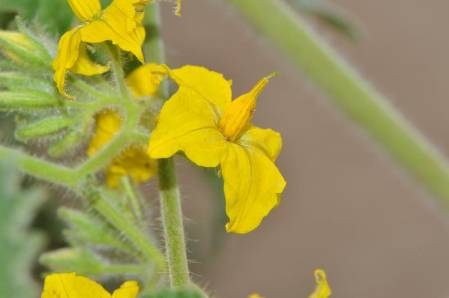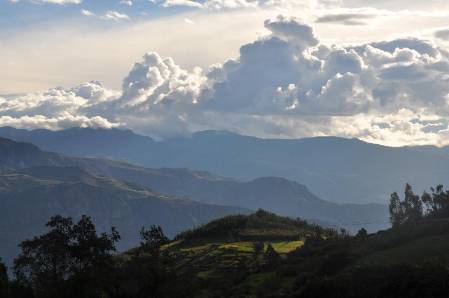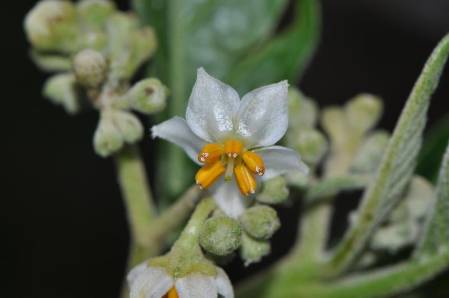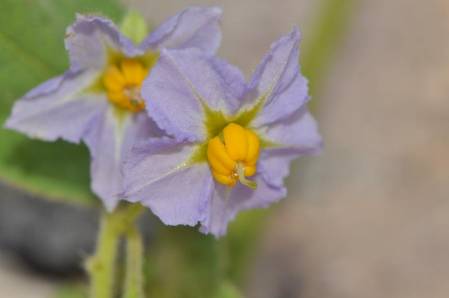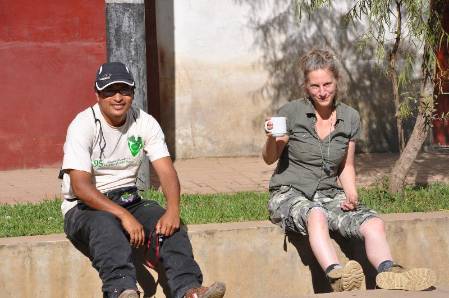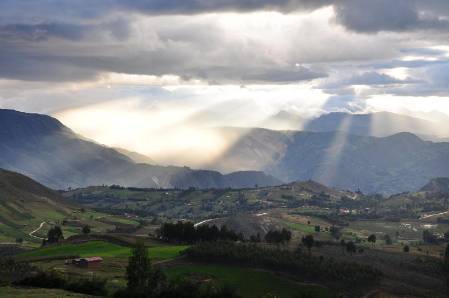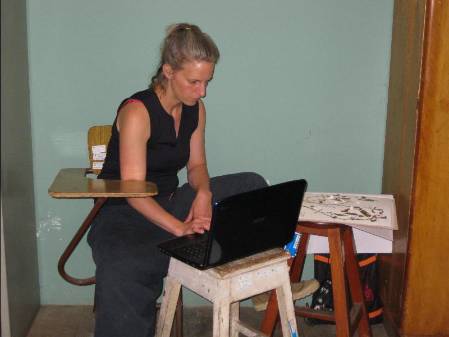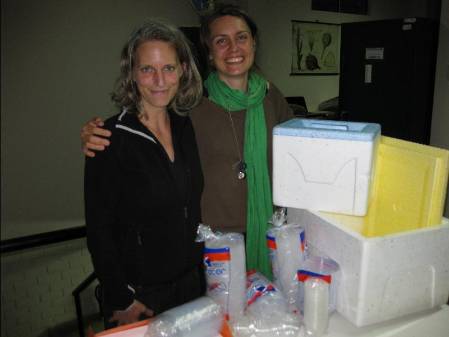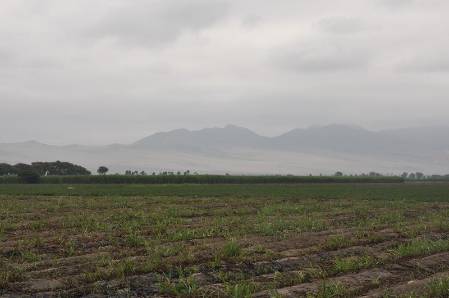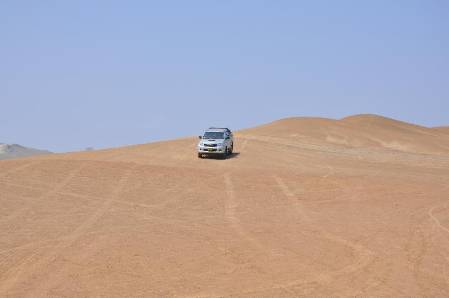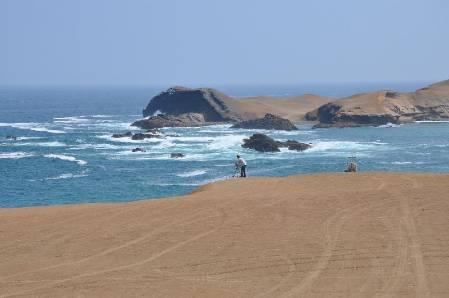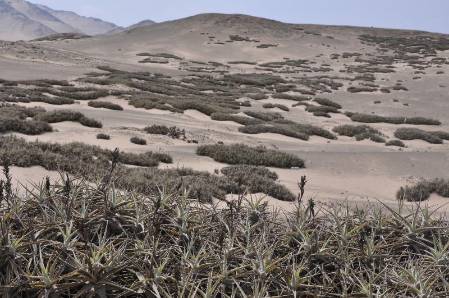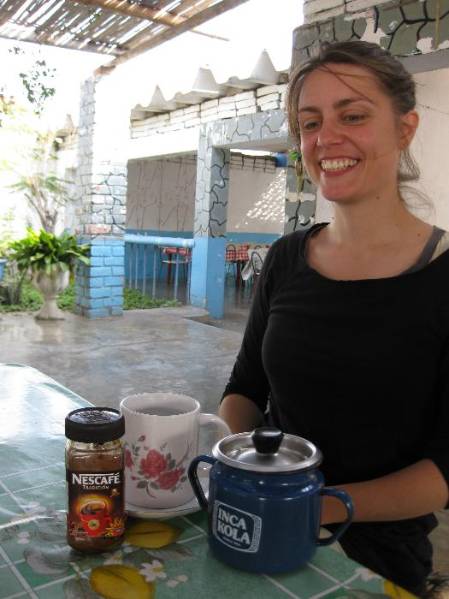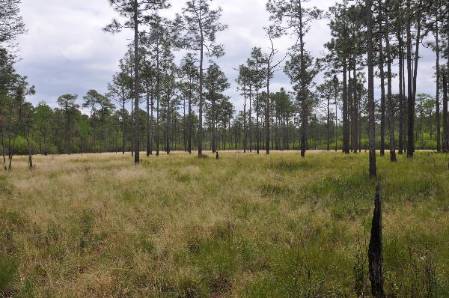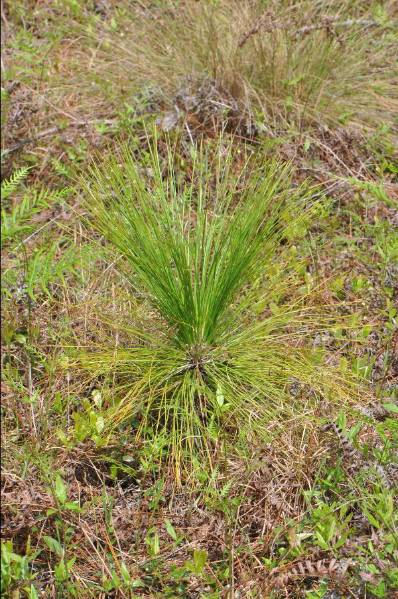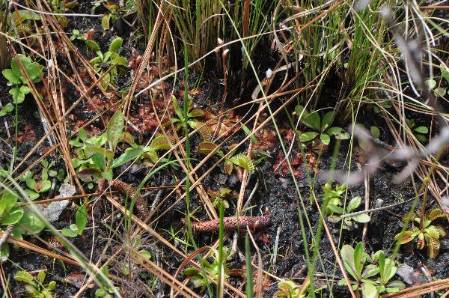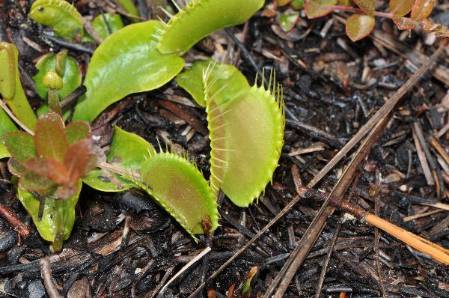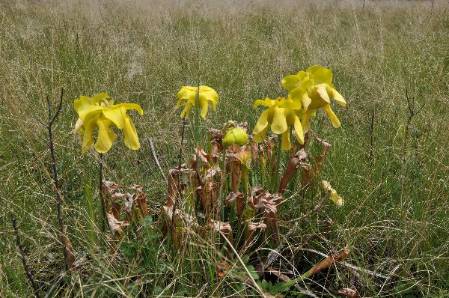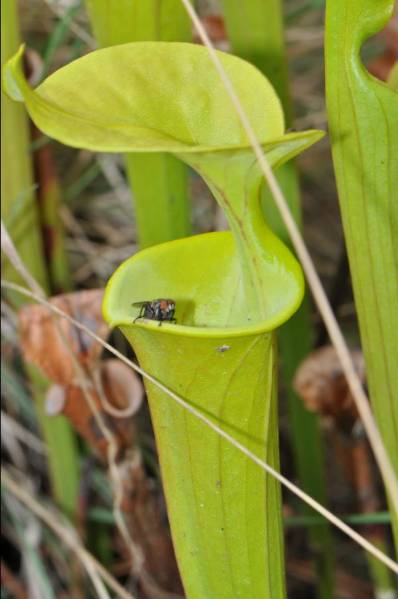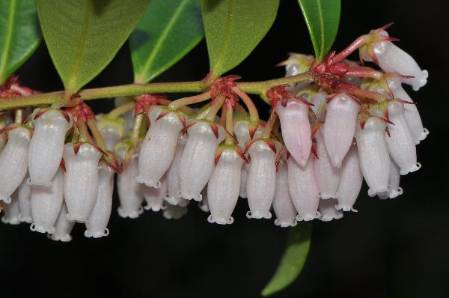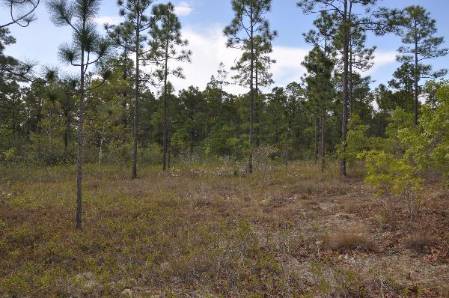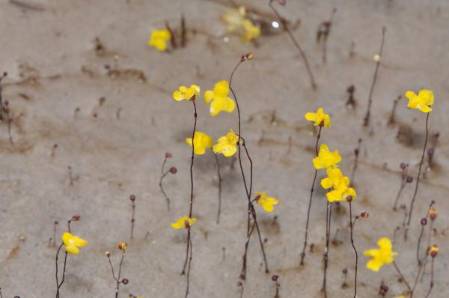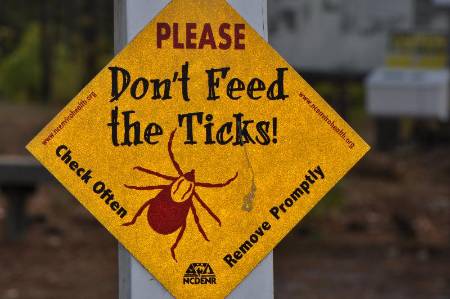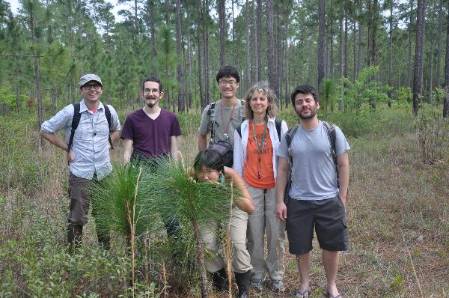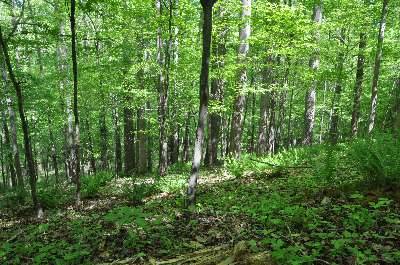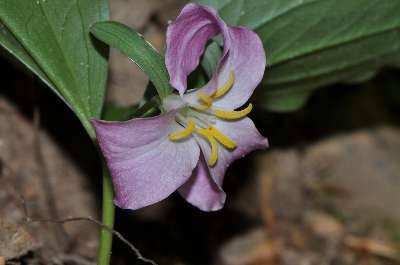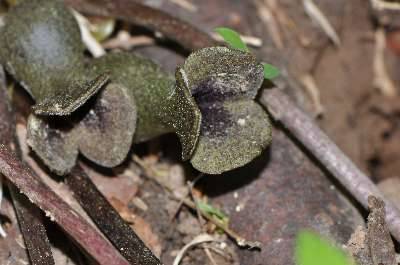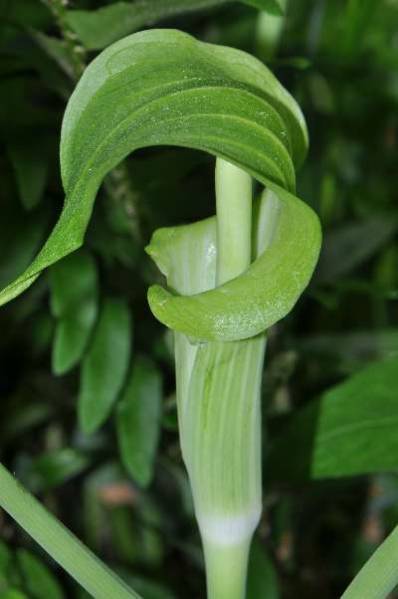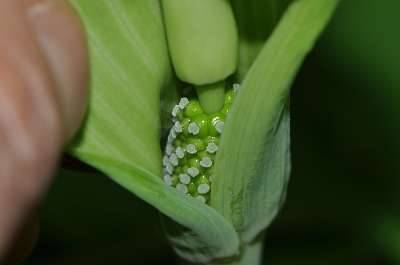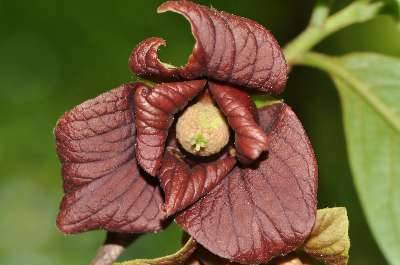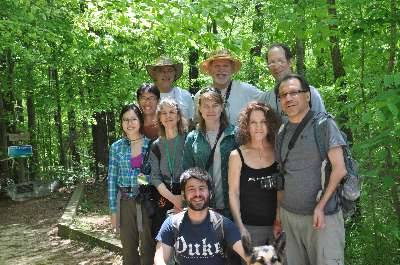After our long drive, we arrived in Santa Maria do Salto late at night to stay in a small pousada (hotel) called Recanto do Pedra. When we woke up the next morning we saw why the name! Several huge granite inselbergs towered over the town. A beautiful location for a town isn’t it?
Huge granite inselbergs towering over Santa Maria do Salto.
We were headed to the forest, however, so off we went. Along the way we began to see Solanaceae – so very different than those of the Andes. Southeastern Brazil, and in particular the mâta atlantica (Atlantic forests), is the other main centre of Solanaceae diversity in South America.
What’s more, the species are completely different to those in the Andes, which is to be expected, but interestingly the major groups in Solanum also differ. So for example, groups that are diverse in the Andes are hardly found here, and groups diverse here are not found in the Andes. So for me – this is totally new ground!!
The Solanaceae team
I haven’t really introduced my travelling companions yet:
- Lynn Bohs is a colleague from the University of Utah, we have been working together on Solanum for a long time
- João Renato Stehmann is a professor at the Universidade Federal do Minas Gerais, he is the world expert on Petunia and is a real knowledge bank about Brazilian Solanaceae
- Leandro Giacomin is a PhD student with João, and is working on the Brevantherum clade of Solanum (more about that later) – he has just spent a year in Lynn’s lab in Utah
So with the addition of me that’s us – the four Solanaceae musketeers! They will be in pictures later on….
We began to see our targets along the road – the first was an exception to my rule above! Section Erythrotrichum (so called for its hairy fruits) occurs both in SE Brazil and in the Andes, but different species in each place.
Solanum megalonyx has showy purple flowers – these were being visited by small metallic green bees.
The forest began to appear as we got closer to our destination – a private reserve called Fazenda Duas Barras, where the northern populations of muriqui monkeys are protected. Sadly, we didn’t see any monkeys, but the forest, though selectively logged in the past, was beautiful!
Forest in Fazenda Duas Barras.
We were allowed to stay in a wonderful house right next to the forest – it only had a few leaks in the roof! And it did rain – most of the time... this is a very wet place. The house fortunately had a traditional cooking corner with a wood-burning stove that served very well for cooking and later for drying boots after a wet day in the woods!
The house just before the rain began again, the lichens on the posts give a clue as to how wet it is.
Leandro and Lynn cooking scrambled eggs and a new delicacy for the rest of the team - fried bread.
Four very wet pairs of boots drying in front of the fire...
The reserve doesn’t have organised trails to speak of, so we were taken by Batista on a magical tour up and down hills and in the most amazing forest. He cut the trail as we went, but knew the forest so well that he recognised exactly where we were the entire time.
Here is Batista Tavares de Oliveira standing next to a species of Capsicum (chili pepper) that grows deep in the forest; Brazil is the centre of diversity for this genus and we know there are more new ones to be described.
We think this is probably Capsicum pereirae, endemic to the mâta atlantica and described by my colleague of Patagonian collecting days, Gloria Barboza – the leaves are rubbery and shiny and it really does grow in the deepest forest.
We had two great days collecting in this incredibly Solanaceae-rich forest – there were treasures galore.
Brunfelsia hydrangiiformis is a spectacular plant also endemic to the mâta atlantica, but is really a complex mix of several species that still needs working out taxonomically.
The nightshades are not a common here as in the Andes – they are a bit harder to find! Each of us had a prize of the forest though – and here they are…. First João…
João first collected this new species of the genus Aureliana ten years ago, and wasn’t able to find it again on a return visit – this time we got lucky! We only found a couple of plants though, so it is not common.
The new species is another rare, spindly forest understory shrub - so many of these are hard to find, and are easily overlooked - but with four of us with our eyes peeled we did find it at last!
Then Leandro…..
Leandro is working on a group of Solanum species that are most diverse in southern Brazil, with some species so rare they have only been collected a few times. This tree of Solanum sambuciflorum is only the fourth collection of this species since it was first described in the 19th century; Leandro was incredibly happy to have found it!
The flowers of Solanum sambuciflorum have an odd, slightly sweet scent – we dithered between lilacs and talcum powder…
Then Lynn….
Solanum rupincola is a member of an exclusively Brazilian group and is one of only a few of the species with a name! These are high-climbing vines and we were lucky to find one in a tree next to the road; this flower is about 1.5 cm in diameter.
We were told the muriqui monkeys eat this fruit – difficult to imagine with the outer covering of tough prickles, but the flesh is lovely and sweet.
And although everything was new to me and therefore madly exciting, I had a favourite too!
I described Solanum bahianum from specimens I had seen in the herbarium – I had never seen it in the field! Our collection may also be a new distribution record for the species, never before collected in Minas Gerais.
We also saw much other diversity - heard bellbirds and manakins all day, but never managed to see them high up in the canopy. The fungi were a real feature - not surprising for a place where it rained all the time!
The veil on this delicate stinkhorn fungus was so easily damaged - we were lucky to have seen it at the edge of a treefall gap.
It rained on us for much of our two days in the field, so we were glad of a hot coffee with the manager of the reserve and his wife – they were so hospitable and kind.
From left to right – Sandy, Senhor João"Dao" Tavares de Oliveira, Lynn, João, Senhora Tavares de Oliveira, Leandro.
João will leave us tomorrow to go back to Belo Horizonte to organise the National Botanical Congress – it was great he could come with us for these few days, we had a great time! Leandro, Lynn and I will then head north into the state of Bahia – more solanaceous treasures await I am certain…




